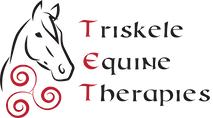Fly twitch muscles, is that really all they do?
- Bonnie Sweeney
- Feb 25, 2024
- 2 min read

Every spring / summer the flies start to make an appearance and with horses shedding out their winter coat owners are starting to see lines on their horses that have may have been hidden before. Around this time there's normally an influx of people asking about two particular lines are on their horse. One which is found on the dorsa-lateral portion of the scapular, and one which is found on the flank of the horse.
These lines are often confused for fascial lines or fascial restrictions, but they are actually caused by cutaneous muscles. Cutaneous muscles (as the name suggests) are muscles found close to the skin, and they are the most superficial muscles on the horse. Unfortunately, they aren't often listed or illustrated in anatomical books / articles and I'm not sure why that is, other than maybe the importance of these muscles is understated. Luckily due to the influx of interest from concerned owners the word of what these muscles are and do is slowly spreading.
The two muscles that are responsible for these lines are the cutaneous omobrachialis and cutaneous trunci respectively. Colloquially these muscles are referred to as "fly twitch muscles" as these thin sheets of striated muscle are responsible for the skin twitching that happens when a fly lands in these zones. For this reason, when the lines appear they are often dismissed as just over worked from that. Whilst this is certainly possible, in my experience nothing in the horse's body has only one function.

What I have learned through treatment and investigation is that these muscles can actually be recruited by the body to compensate for dysfunction in the surrounding structures of the horse. The omobrachialis can support and stabilise the shoulder and indirectly the elbow of the horse. I see this particularly in horses with a dropped or weak thoracic sling. Further down the body the trunci can be recruited with pulling the hindlimb forward and may indicate hind end weakness, particularly in the stifle.
Once the weakness or dysfunction has been addressed these lines will often disappear over time.
In the case of hypertrophy due to insect irritation in spring / summer these lines should disappear in winter (though that might be tricky to assess under a fluffy winter coat).
As with all superficial muscles, they become more apparent when the body is dehydrated. So, make sure you horse has access to plenty of clean fresh water and had salt added to their diet.







Comments